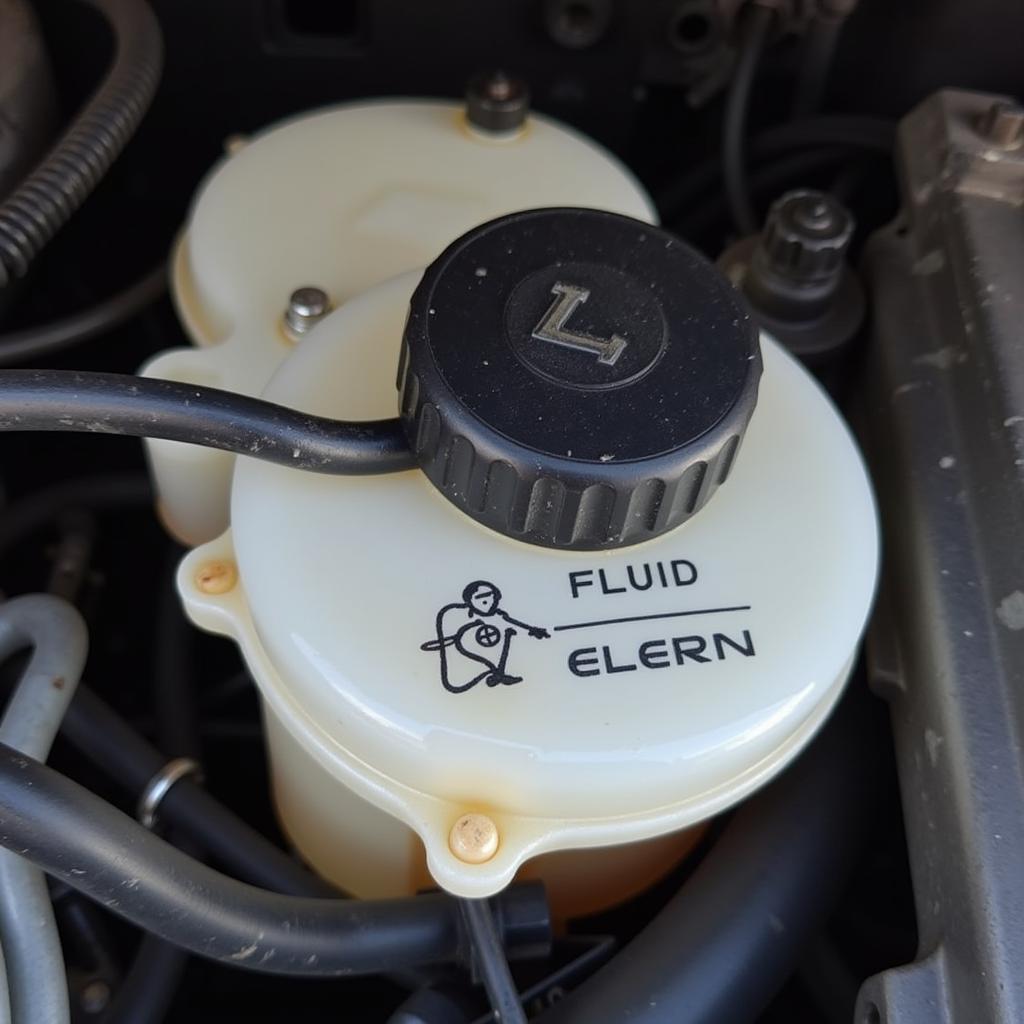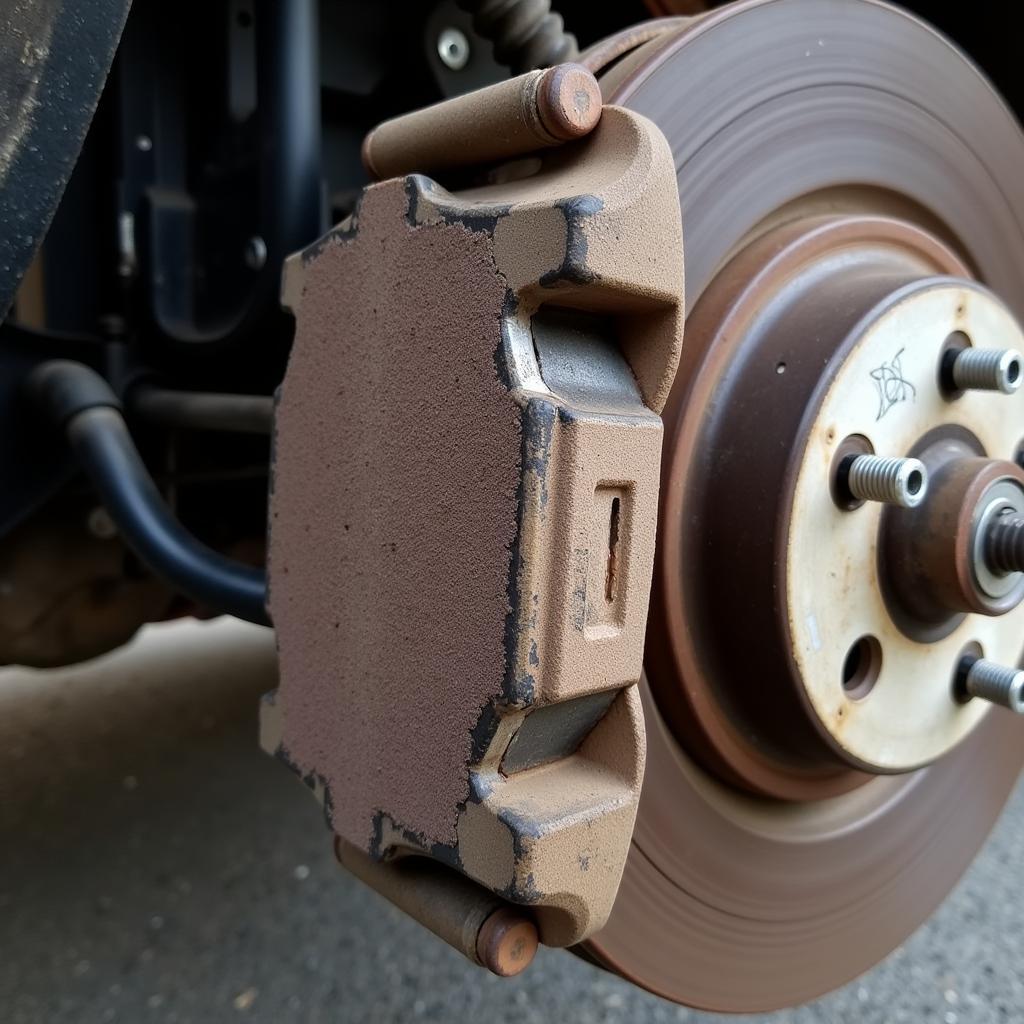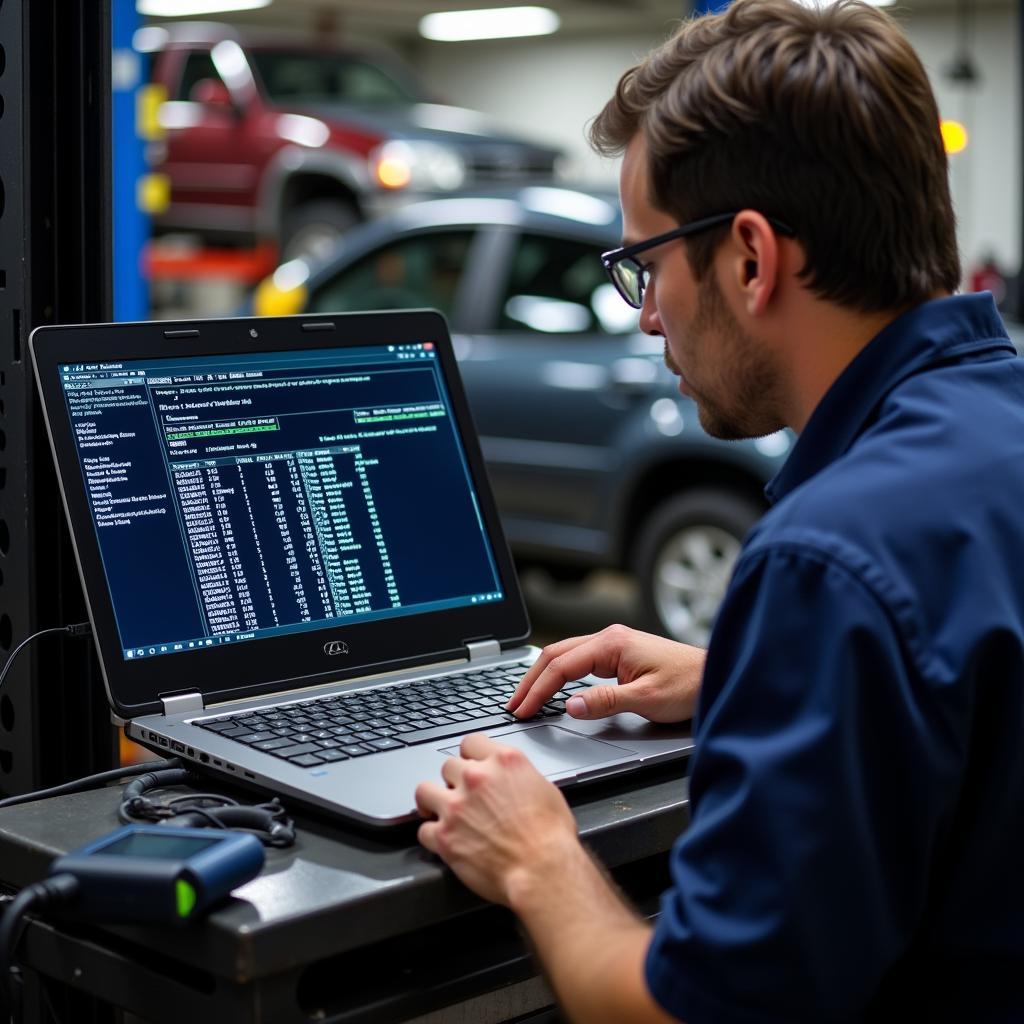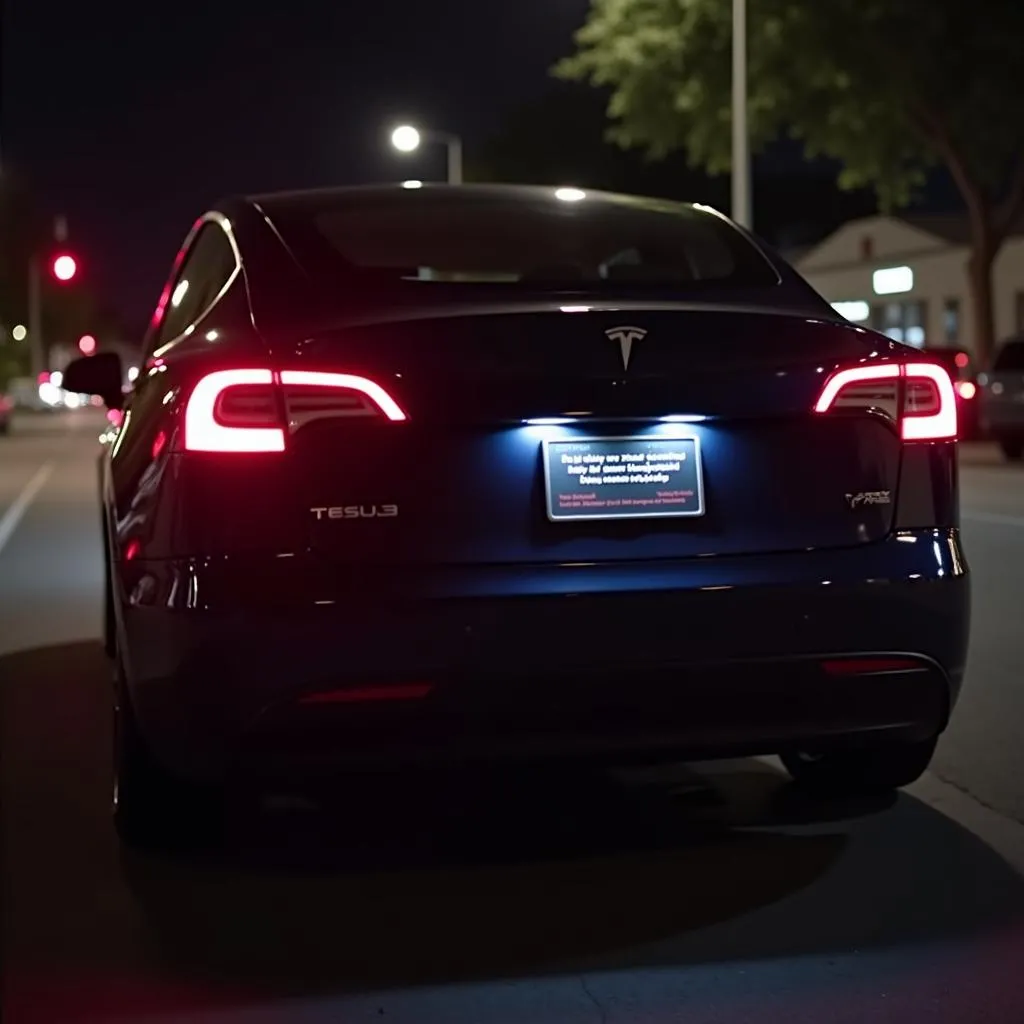The brake warning light on your 1999 Lexus RX300 is a crucial safety feature, illuminating on the dashboard to signal potential issues within your braking system. While it can be alarming to see this light come on, understanding the common causes can help you address the problem effectively.
One of the most frequent reasons for the brake warning light to illuminate is low brake fluid levels. Brake fluid is the lifeblood of your RX300’s braking system, transmitting the force from your foot on the pedal to the calipers that clamp the brake pads onto the rotors, effectively slowing down or stopping your vehicle.
 Low brake fluid reservoir in a Lexus RX300
Low brake fluid reservoir in a Lexus RX300
However, brake fluid naturally deteriorates over time, absorbing moisture and losing its effectiveness. This degradation can lead to a spongy brake pedal feel and reduced braking performance. Regularly scheduled maintenance, as outlined in your RX300 owner’s manual, is vital to ensure your brake fluid is flushed and replaced with fresh fluid, maintaining optimal braking performance and safety.
Identifying the Culprit: Beyond Low Brake Fluid
While low brake fluid is a prevalent cause, the brake warning light can also point to other issues that demand attention. Here are some additional possibilities:
-
Worn Brake Pads: Your RX300’s brake pads are designed to wear down gradually as you use your brakes. Thin brake pads trigger the brake warning light to alert you it’s time for a replacement.
-
Faulty Brake Light Switch: The brake light switch, located behind the brake pedal, signals the brake lights to illuminate when you press the pedal. A malfunctioning switch can disrupt this signal, leading to the brake warning light illuminating.
-
ABS Problems: If your RX300’s anti-lock braking system (ABS) encounters an issue, the brake warning light might come on alongside the ABS warning light. This could indicate a problem with the ABS control module, wheel speed sensors, or other components within the system.
 Worn brake pad wear indicator on a Lexus RX300
Worn brake pad wear indicator on a Lexus RX300
Diagnosing the Issue: What to Do When the Light Turns On
Ignoring a lit brake warning light can jeopardize your safety and potentially lead to more severe brake system damage. If your 1999 Lexus RX300’s brake warning light comes on, follow these steps to diagnose the problem:
-
Check Brake Fluid Level: Safely park your vehicle on a level surface and turn off the engine. Open the hood and locate the brake fluid reservoir, typically positioned near the firewall on the driver’s side. Check the fluid level, ensuring it falls within the “MIN” and “MAX” markings on the reservoir. If the level is low, adding brake fluid might temporarily address the issue, but it’s essential to have your braking system inspected for leaks or other problems by a qualified mechanic.
-
Inspect Brake Pads: If your brake fluid level appears normal, the next step is to examine your brake pads. Your RX300’s owner’s manual can guide you on locating and inspecting the pads. Look for signs of excessive wear, such as thin pads or a metal-on-metal scraping sound when applying the brakes. If you notice significant wear, consult a mechanic for brake pad replacement.
-
Seek Professional Help: If you’ve checked the brake fluid and brake pads and the light remains illuminated, it’s crucial to seek professional assistance. A qualified mechanic possesses the expertise and diagnostic tools to pinpoint the root cause of the problem and recommend the appropriate repairs.
Remote Diagnostics and Software Solutions: A Modern Approach
In today’s technologically advanced world, remote diagnostics and software solutions are revolutionizing automotive repair, offering innovative ways to address issues with your 1999 Lexus RX300.
“Remote diagnostics empower us to analyze your vehicle’s data, pinpoint the source of the problem, and provide tailored solutions remotely,” says John Miller, Senior Automotive Diagnostic Technician at XYZ Auto Solutions. “This approach saves valuable time and effort, allowing us to expedite the repair process and minimize your vehicle downtime.”
 Remote diagnostics on a 1999 Lexus RX300 using a laptop
Remote diagnostics on a 1999 Lexus RX300 using a laptop
Frequently Asked Questions
Q: Can I drive my Lexus RX300 with the brake warning light on?
A: While you might be able to drive a short distance with the brake warning light on, it’s strongly discouraged. Driving with a compromised braking system puts you and others at risk.
Q: How often should I change my Lexus RX300’s brake fluid?
A: It’s generally recommended to replace your brake fluid every two years or as specified in your owner’s manual.
Q: How long do Lexus RX300 brake pads last?
A: Brake pad lifespan varies greatly depending on driving habits and conditions. However, it’s advisable to have your brake pads inspected every 12,000 miles.
Q: Can I add any type of brake fluid to my Lexus RX300?
A: It’s essential to use the brake fluid type recommended by Lexus for your RX300. Using the incorrect fluid can damage your braking system.
Q: How can remote diagnostics help with my 1999 Lexus RX300’s brake issues?
A: Remote diagnostics can quickly identify the root cause of the brake warning light, whether it’s a sensor malfunction, software glitch, or a mechanical problem.
Addressing the brake warning light on your 1999 Lexus RX300 promptly ensures your safety and prevents potential complications. By staying proactive with maintenance and seeking professional assistance when needed, you can keep your RX300 stopping reliably for miles to come.


